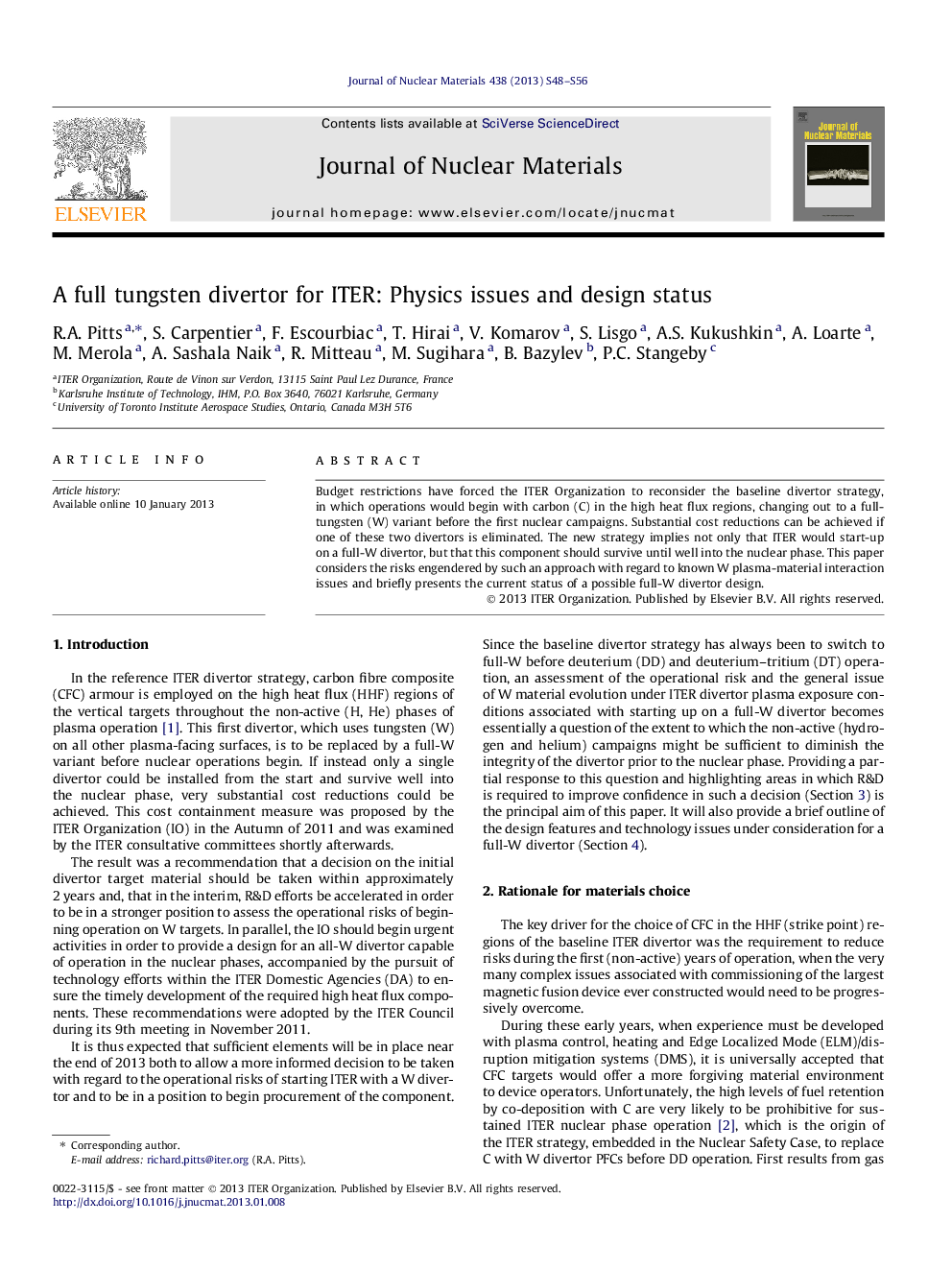| Article ID | Journal | Published Year | Pages | File Type |
|---|---|---|---|---|
| 10644949 | Journal of Nuclear Materials | 2013 | 9 Pages |
Abstract
Budget restrictions have forced the ITER Organization to reconsider the baseline divertor strategy, in which operations would begin with carbon (C) in the high heat flux regions, changing out to a full-tungsten (W) variant before the first nuclear campaigns. Substantial cost reductions can be achieved if one of these two divertors is eliminated. The new strategy implies not only that ITER would start-up on a full-W divertor, but that this component should survive until well into the nuclear phase. This paper considers the risks engendered by such an approach with regard to known W plasma-material interaction issues and briefly presents the current status of a possible full-W divertor design.
Related Topics
Physical Sciences and Engineering
Energy
Nuclear Energy and Engineering
Authors
R.A. Pitts, S. Carpentier, F. Escourbiac, T. Hirai, V. Komarov, S. Lisgo, A.S. Kukushkin, A. Loarte, M. Merola, A. Sashala Naik, R. Mitteau, M. Sugihara, B. Bazylev, P.C. Stangeby,
